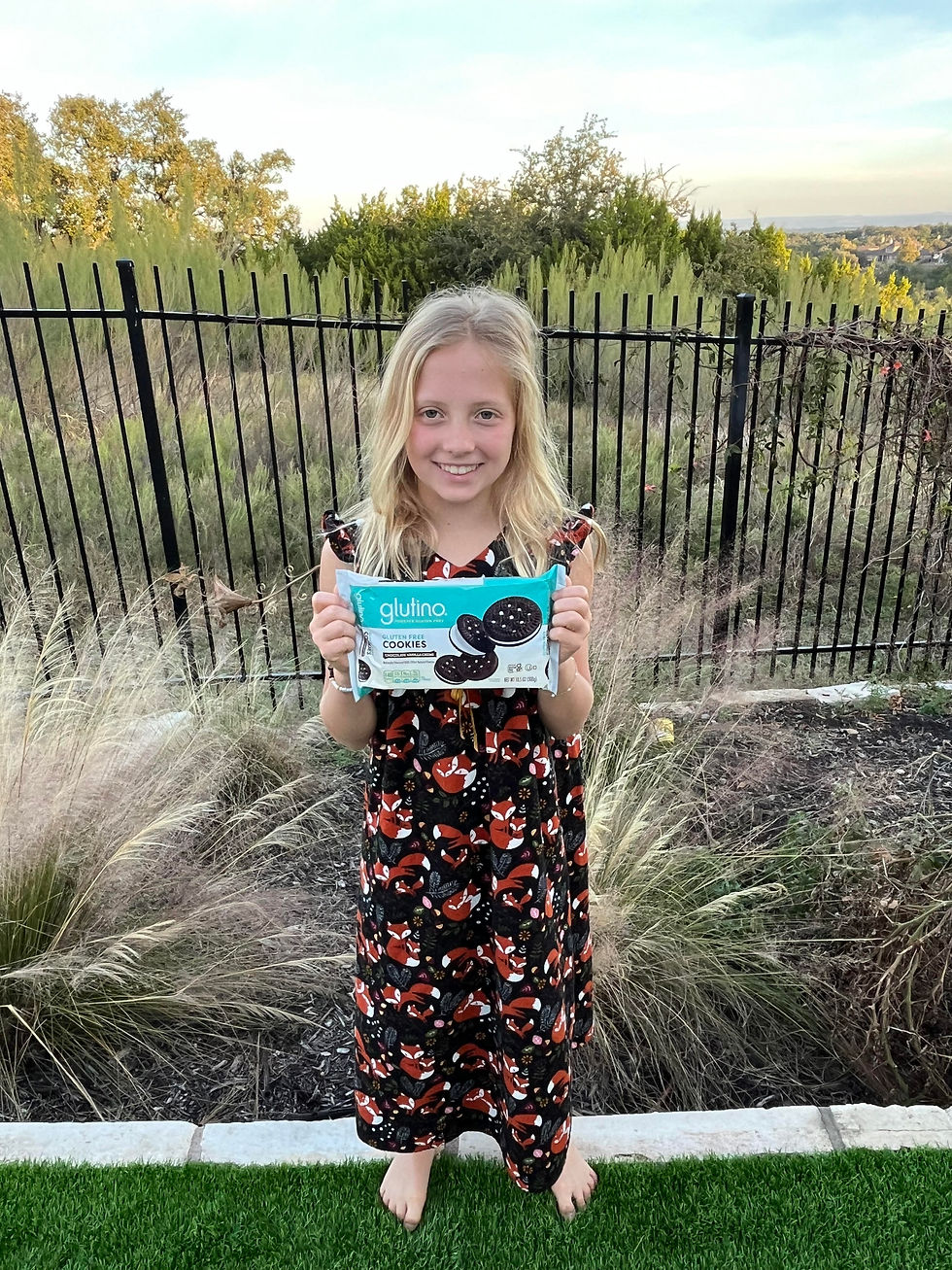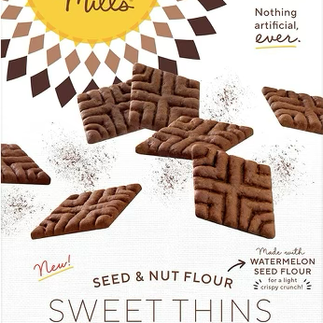But Mom, I Want It!
- chericeaingram
- Nov 25, 2024
- 4 min read
Updated: Dec 2, 2024

This week my daughter received a “treat” from her dance class. Apparently, a couple weeks ago they celebrated a birthday in the class and the dessert that was brought into share was not gluten free. She cannot eat gluten, so her teacher felt bad and fast forward…she received a package of gluten free cookies. It was such a sweet gesture, and my daughter was excited! However, she turned over the package and looked at the nutrition label and then she cringed. We’ve been chatting a lot about labels and added sugars lately so when she saw the label she knew the cookies were not a healthy choice for her, but man she wanted them!

My sweet girl brought the cookies home and said, “I know you’re not going to like them,” explaining that she had looked at the label. I was so proud of her for identifying one of the harmful ingredients on her own. This led to a meaningful conversation about making smart, healthy choices. I told her it wasn’t about whether I liked the cookies, but whether they were a good choice for her body. Together, we read the ingredients and discussed how the sugars in the cookies would affect her. The label showed 14g of added sugars in just two cookies—28% of her daily recommended caloric intake! We talked about how the daily maximum for added sugar should be under 25g, or about 6 teaspoons. (Which is a lot!) She then asked, “Can I just try one to see what it tastes like?”
This is a familiar dilemma for many parents: how do we raise children who can make healthy choices when society has normalized sugary foods as treats and rewards? We celebrate with birthday cakes, cookies, and candy on every occasion—birthdays, holidays, school parties. For kids, sweets become symbols of celebration, but they’re also often unhealthy. So, what do I say to my daughter? We’ve discussed why the cookies are not the healthiest choice, how they affect the body, and how they’ll make her feel. Yet, she still wants to try one.
Ultimately this dilemma depends on the parent and their child. Each child is different. My son, for example, would likely eat the cookie just to spite me, while my older boys might turn it down without a second thought after learning more about what’s in them. My niece usually decides to try it, takes one to two bites, and then toss it because she does not like it. The challenge as a parent is how to guide them while balancing these different personalities and needs.
Other considerations:
If I tell her the cookies are bad for her, but let her try them, what message does that send?
If I refuse, will she hide the cookies from me next time, instead of being open?
And will making unhealthy foods a big issue cause her to develop unhealthy food associations or fears?
These are important considerations in shaping how we talk to our children about food and health.
My son, the one who would choose to eat the cookie; he then feels bad, he may get a headache, his stomach hurts or he’s running to the bathroom. This leads to us talking about how he is feeling and what the food did to his body. These natural consequences help him to make better choices.
We recommend that as you have these conversations with your children, the focus is on how food affects the body, rather than labeling food as “good” or “bad.” High-sugar foods give us a quick energy boost, but that sugar spike crashes, leaving us feeling tired and sluggish. This is why we sometimes experience headaches or fatigue after eating too much sugar. Natural sugars in whole foods like fruit, on the other hand, come with fiber that helps slow the sugar’s absorption and helps us feel fuller longer.
“It naturally comes in a container that produces a shorter blood sugar response and aids in fullness. Today's sugars are refined and concentrated,” Experts Agree: Sugar Might Be as Addictive as Cocaine, Healthline.com
The refined, concentrated sugars of today hit our blood sugar levels, and it spikes quickly. “Sugar activates the opiate receptors in our brain and affects the reward center, which leads to compulsive behavior, despite the negative consequences like weight gain, headaches, hormone imbalances and more,” Healthline.com
The Nourished Knight approved sugars come from naturally occurring sugars based on the ancestral mindset of eating.
Honey
Maple Syrup
Coconut Sugar
Maple Sugar
So, when you are looking for alternative sweets for your kiddos, anything sweetened with one of these sugars is a healthier alternative. It doesn't mean that this is healthy, it is still a sugar and should be consumed not in excess.
To help solve my daughter's cookie dilemma, I took her on a trip to the grocery store and she had so much fun looking for foods that have hidden sugars in them. She felt empowered when she learned that one product was unhealthy but there was a healthier alternative out there. She even said things like, “Hey I like these! Yay, these are good for me!” It was an opportunity to show her that making better choices doesn’t mean sacrificing taste—it just means being mindful of what’s inside the foods we eat.
Teaching kids to make healthy choices takes time and reinforcement. This is a marathon, not a sprint. Your constant reinforcement of choosing healthy and teaching your child to do the same will pay off. And when you need help, turn to us—we’re all in this together!









Comments